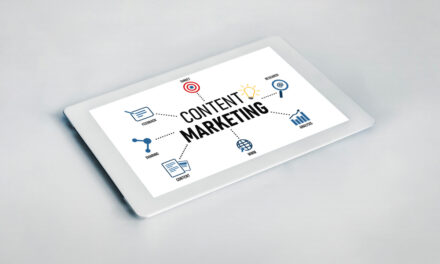Introduction
Welcome to the world of Facebook advertising! If you’re reading this, you’re probably aware of the immense potential that Facebook holds for businesses in terms of reaching a vast and engaged audience. As a platform with over 2.8 billion active users, Facebook offers a unique opportunity to connect with potential customers from all walks of life.
In this blog post, I’m going to take you on a journey through the ins and outs of Facebook advertising. Whether you’re a small business owner looking to dip your toes into the digital marketing world, or a seasoned marketer wanting to brush up on your skills, this step-by-step guide is designed to help you master Facebook advertising.
We’ll start from the very basics, like setting up your business page and understanding the Facebook Ad Manager. Then, we’ll delve into the more complex aspects, such as defining your advertising goals, identifying your target audience, and creating engaging ads. We’ll also cover budgeting, scheduling, tracking, and analyzing your ads to ensure you’re getting the best return on your investment.
By the end of this guide, you’ll have a comprehensive understanding of how to effectively use Facebook advertising to reach your business goals. So, let’s get started on this exciting journey!
Understanding Facebook Advertising
Before we dive into the practical steps of creating Facebook ads, it’s important to understand what Facebook advertising is and why it’s such a powerful tool for businesses.
Facebook advertising is a platform that allows businesses to create and run ads across Facebook’s vast network, which includes Instagram and the Audience Network. These ads can appear in users’ News Feeds, on the right-hand column of Facebook, within Stories, in In-stream videos, and more. The placement of your ads will depend on your advertising goals, which we’ll discuss later in this guide.
One of the key strengths of Facebook advertising is its incredible targeting capabilities. Facebook collects a wealth of data about its users, including their demographics, interests, behaviors, and connections. As an advertiser, you can leverage this data to reach a highly specific audience. Whether you want to target new moms in New York who love yoga, or retirees in Florida who are interested in golf, Facebook advertising makes it possible.
But why is Facebook advertising so crucial for businesses? Here are a few reasons:
- Reach: With billions of users worldwide, Facebook gives you access to a massive audience. No matter who your customers are, chances are, they’re on Facebook.
- Targeting: As mentioned earlier, Facebook’s advanced targeting options allow you to reach the right people at the right time.
- Cost-Effectiveness: Compared to traditional forms of advertising, Facebook advertising can be much more cost-effective, allowing you to reach a larger audience for less money.
- Engagement: Facebook is a platform where people come to engage with content. This means your ads can drive meaningful interactions, from likes and comments to shares and conversions.
- Measurability: With Facebook’s analytics tools, you can track the performance of your ads in real-time and make data-driven decisions.
Now that you have a basic understanding of what Facebook advertising is and why it’s important, let’s move on to the practical steps of setting up your Facebook business page.
Setting Up Your Facebook Business Page
Before you can start advertising on Facebook, you’ll need to set up a Facebook Business Page. This is a public profile specifically created for businesses, brands, celebrities, causes, and other organizations. Unlike personal profiles, business pages are visible to everyone on the internet by default. They also provide tools to help marketers reach and interact with their audience.
Here’s a step-by-step guide on how to set up your Facebook Business Page:
Step 1: Sign Up
- Go to facebook.com/pages/create.
- Select the type of page you want to create: business/brand or community/public figure.
- Click ‘Get Started’ and follow the on-screen instructions.
Step 2: Add Pictures
- Upload a profile picture. This could be your company logo or any image that represents your business.
- Upload a cover photo. This should be a larger image that captures the essence of your brand.
Step 3: Fill Out Your Business Information
- Complete the ‘About’ section. This includes your business name, address, contact information, and a brief description of what your business does.
- Make sure to also include your website URL if you have one.
Step 4: Create Your Username
- Your username, also called your vanity URL, is how people will find you on Facebook. It should match your business name as closely as possible.
Step 5: Describe Your Business
- You have 255 characters to describe what your business does in a way that appeals to potential followers.
- This description will appear in the About section of your page and in search engine results, so make sure it’s concise and informative.
Step 6: Set Up Your Page Roles
- If you have team members who will be helping manage your page, you can add them in the ‘Page Roles’ section.
Step 7: Customize Your Page
- Facebook allows you to customize your page with tabs and sections to showcase different aspects of your business, like services, reviews, and photos.
Step 8: Publish Your Page
- Once you’re happy with how your page looks, click ‘Publish’ and your page will go live!
Remember, a well-optimized business page is the foundation of your Facebook advertising efforts. It’s the first place people will look when they want to learn more about your business, so make sure it accurately represents your brand and provides all the necessary information.
Understanding Facebook Ad Manager
Once your Facebook Business Page is set up, it’s time to get acquainted with Facebook Ad Manager. This is the command center for your Facebook advertising campaigns, where you’ll create and manage your ads.
Here’s an overview of Facebook Ad Manager and how to navigate it:
Accessing Ad Manager
- To access Ad Manager, click on the drop-down arrow in the top-right corner of your Facebook homepage and select ‘Manage Ads.’ If you’re new to Facebook advertising, you’ll need to set up your Ad account first.
Understanding the Dashboard
- The Ad Manager dashboard is where you’ll see an overview of your ad campaigns. You can view key metrics like reach, impressions, clicks, and spend. You can also customize the columns to display the metrics that matter most to you.
Navigating the Menu
On the left-hand side of the dashboard, you’ll see a menu with several options:
- Campaigns: This is where you’ll create and manage your ad campaigns. Each campaign can have multiple ad sets and ads.
- Ad Sets: Here, you’ll define your targeting, budget, schedule, and placement at the ad set level. Each ad set can contain multiple ads.
- Ads: This is where you’ll create your individual ads, including the creative, copy, and call-to-action.
Creating a Campaign
- To create a new campaign, click on the green ‘+ Create’ button. You’ll be guided through the process of setting your marketing objective, defining your audience, choosing your ad placement, setting your budget and schedule, and creating your ad.
Using Tools and Settings
Ad Manager also includes several tools and settings to help you manage your ads more effectively. These include:
- Audiences: Here, you can create and manage custom audiences for your ads.
- Pixels: This is where you’ll set up and manage your Facebook pixel, a piece of code that helps you track conversions from Facebook ads.
- Billing: This section contains your payment information and billing history.
Understanding Facebook Ad Manager is crucial for running successful ad campaigns. Take some time to familiarize yourself with its features and functionalities. In the next sections, we’ll delve deeper into the process of creating an ad campaign, starting with defining your advertising goals.
Defining Your Advertising Goals
Before you create your first Facebook ad, it’s important to clearly define your advertising goals. What do you want to achieve with your Facebook advertising campaign? Your goals will guide your advertising strategy and help you measure the success of your campaign.
Facebook categorizes advertising goals into three main types: Awareness, Consideration, and Conversion. Each of these categories has specific objectives that align with different stages of the customer journey.
1. Awareness
- Brand Awareness: Increase awareness of your brand by reaching people who are likely to be interested in it.
- Reach: Show your ad to the maximum number of people.
2. Consideration
- Traffic: Drive traffic to a specific webpage, app, or Messenger conversation.
- Engagement: Boost engagement on your posts, get more Page likes, event responses, or promote offers.
- App Installs: Get more people to install your app.
- Video Views: Promote videos that show behind-the-scenes footage, product launches, or customer stories to raise awareness about your brand.
- Lead Generation: Collect lead information, such as email addresses, from people interested in your business.
- Messages: Encourage people to contact your business using Facebook Messenger.
3. Conversion
- Conversions: Encourage people to take a specific action on your website, such as adding a product to the cart, downloading a PDF, or submitting a form. For this objective, you’ll need to use the Facebook pixel.
- Catalog Sales: Show products from your e-commerce store’s catalog to generate sales.
- Store Traffic: Drive traffic to your physical stores by showing ads to people who are nearby.
When choosing your advertising goal, think about what action you want people to take when they see your ad. Do you want them to visit your website? Purchase a product? Fill out a form? The goal you choose will determine the rest of your ad setup process, including your targeting, ad creative, and bidding strategy.
Remember, your advertising goals should align with your overall business objectives. In the next section, we’ll discuss how to identify your target audience.
Identifying Your Target Audience
One of the most powerful features of Facebook advertising is its advanced targeting capabilities. Identifying your target audience is a crucial step in the ad creation process, as it ensures your ads are shown to the people most likely to be interested in your products or services.
Here’s a guide on how to define and set up your target audience in Facebook Ad Manager:
1. Define Your Audience
- Start by thinking about who your ideal customer is. Consider demographics such as age, gender, location, and language. But don’t stop there. Dive deeper into their interests, behaviors, and connections. What are their hobbies? What kind of websites do they visit? What other brands do they like?
2. Use Facebook’s Targeting Options
Once you have a clear picture of your ideal customer, you can use Facebook’s targeting options to reach them. These options are divided into three categories:
- Core Audiences: Define your audience based on criteria like location, demographics, interests, behaviors, and connections.
- Custom Audiences: Reach people who already have a relationship with your business, such as existing customers, website visitors, or app users.
- Lookalike Audiences: Find people who are similar to your best existing customers.
3. Set Up Your Audience in Ad Manager
- When creating your ad in Ad Manager, you’ll be asked to define your audience. You can either create a new audience based on the criteria you’ve defined, or use a saved audience if you’ve created one before.
4. Refine Your Audience
- Facebook provides an ‘Audience Size’ meter that shows you the potential reach of your ad based on your targeting criteria. If your audience is too broad, you might waste money reaching people who aren’t interested in your business. If it’s too narrow, you might miss out on potential customers. Try to find a balance that gives you the best chance of achieving your advertising goals.
5. Save Your Audience
- If you think you’ll use the same audience again in the future, you can save it to speed up the ad creation process next time.
Remember, the key to successful targeting is understanding your customers. The more you know about them, the better you can tailor your ads to their needs and interests. In the next section, we’ll discuss how to create your first Facebook ad.
Creating Your First Facebook Ad
Now that you’ve defined your advertising goals and identified your target audience, it’s time to create your first Facebook ad. This is where you’ll decide on the format of your ad, create your ad copy and visuals, and choose your call-to-action.
Here’s a step-by-step guide on how to create a Facebook ad:
Step 1: Choose Your Ad Format
- Facebook offers several ad formats, including image, video, carousel, slideshow, and collection. The format you choose will depend on your advertising goal and the type of content you want to share.
Step 2: Create Your Ad Copy
- Your ad copy should clearly communicate your message and encourage people to take action. Make sure it aligns with your brand voice and speaks directly to your target audience.
Step 3: Choose or Create Your Visuals
- Visuals are a key component of Facebook ads. You can use photos, videos, illustrations, or a combination of these. Make sure your visuals are high-quality, relevant to your ad copy, and appealing to your target audience.
Step 4: Choose Your Call-to-Action
- Your call-to-action (CTA) is the button that prompts your audience to take the desired action. Facebook offers several CTAs, including ‘Shop Now’, ‘Learn More’, ‘Sign Up’, ‘Download’, and ‘Contact Us’. Choose the one that best aligns with your advertising goal.
Step 5: Preview Your Ad
- Before you publish your ad, make sure to preview it to see how it will look on different devices and placements. Check for any errors or inconsistencies, and make sure everything looks and sounds just right.
Step 6: Confirm and Publish Your Ad
- Once you’re happy with your ad, click ‘Confirm’ to publish it. Your ad will go into a review process to make sure it meets Facebook’s advertising policies. Once approved, your ad will start running and reaching your target audience.
Creating effective Facebook ads is both an art and a science. It requires creativity to come up with engaging copy and visuals, as well as analytical skills to optimize your ads based on performance. In the next section, we’ll discuss how to budget and schedule your ads.
Budgeting and Scheduling Your Ads
Setting a budget for your Facebook ads is a crucial part of your advertising strategy. It determines how much you’re willing to spend on your campaign, while scheduling determines when your ads will run. Here’s how to set your budget and schedule in Facebook Ad Manager:
1. Set Your Budget
- Facebook offers two budget types: daily and lifetime. A daily budget is the average amount you’re willing to spend on your ad set or campaign every day. A lifetime budget is the maximum amount you’re willing to spend over the lifetime of your ad set or campaign.
- The budget you choose will depend on your advertising goals and the overall amount you’re willing to spend on your campaign. Remember, it’s better to start small and adjust as you see what works.
2. Choose Your Ad Schedule
- You can choose to run your ads all the time, or according to a specific schedule. If you know when your audience is most active on Facebook, you can schedule your ads to run during those times to maximize their impact.
- Keep in mind that if you choose a lifetime budget, you have to set a schedule for your ads.
3. Set Your Bid Strategy
- Your bid strategy determines how you spend your budget and how your ad is delivered. You can choose to focus on getting the most clicks (lowest cost), getting stable delivery (target cost), or getting the most conversions (cost cap).
- The bid strategy you choose will depend on your advertising goals and how much control you want over your ad delivery.
4. Optimize Your Ad Delivery
- You can choose to optimize your ad delivery for ad impressions, link clicks, conversions, or daily unique reach. Facebook will deliver your ads to people who are most likely to take the action you’re optimizing for.
- The delivery optimization method you choose will depend on your advertising goals.
Setting your budget and schedule is a balancing act. You want to reach as many people as possible within your target audience, but you also want to make sure you’re spending your budget efficiently. In the next section, we’ll discuss how to track and analyze your ads to ensure they’re performing well.
Tracking and Analyzing Your Ads
Once your Facebook ads are up and running, it’s important to track their performance and analyze the results. This will help you understand what’s working, what’s not, and how you can improve your ads to achieve better results.
Here’s how to track and analyze your Facebook ads:
1. Use Facebook Ad Manager
- Facebook Ad Manager provides a wealth of data about your ad performance. You can see metrics like reach, impressions, clicks, conversions, and spend. You can also customize your view to focus on the metrics that matter most to you.
2. Set Up Facebook Pixel
- If you’re running ads to drive actions on your website, you’ll need to set up the Facebook pixel. This is a piece of code that you place on your website to track conversions from Facebook ads, optimize ads, build targeted audiences for future ads, and remarket to people who have already taken some kind of action on your website.
3. Understand Key Metrics
It’s important to understand what the different metrics mean so you can accurately analyze your ad performance. Here are a few key metrics to pay attention to:
- Reach: The number of people who saw your ads at least once.
- Impressions: The number of times your ads were on screen.
- Clicks: The number of clicks on your ads.
- Click-Through Rate (CTR): The percentage of times people saw your ad and performed a click.
- Conversions: The number of times people took the action you wanted them to take after seeing your ad.
- Cost per Action (CPA): The average cost of each action a person takes as a result of your ad.
4. Make Adjustments Based on Performance
- If your ads are not performing as well as you’d like, don’t be afraid to make adjustments. This could involve changing your ad creative, tweaking your audience targeting, adjusting your budget, or testing different ad formats.
Remember, the goal of tracking and analyzing your ads is to learn and improve. Use the insights you gain to refine your advertising strategy and make your ads more effective. In the next section, I’ll share some tips and best practices for Facebook advertising.
Tips and Best Practices for Facebook Advertising
Now that you have a solid understanding of how to create and manage Facebook ads, let’s go over some tips and best practices to help you get the most out of your Facebook advertising efforts.
1. Know Your Audience
- The more you understand your audience, the better you can tailor your ads to their interests and needs. Use Facebook’s audience insights tool to learn more about your audience’s demographics, lifestyle, and purchasing behavior.
2. Test Different Ad Variations
- Don’t just settle for one ad. Create multiple ad variations with different images, headlines, and ad copy to see what resonates best with your audience. This is known as A/B testing.
3. Use High-Quality Visuals
- Visuals are the first thing people notice about your ads. Make sure to use high-quality images or videos that are relevant to your ad copy and appealing to your audience.
4. Keep Your Ad Copy Concise
- People on Facebook typically scroll through their News Feed quickly, so your ad copy needs to be concise and engaging to capture their attention.
5. Include a Clear Call-to-Action
- Tell your audience exactly what you want them to do after seeing your ad. Whether it’s ‘Shop Now’, ‘Sign Up’, or ‘Learn More’, a clear call-to-action can significantly increase your click-through and conversion rates.
6. Monitor and Adjust Your Ads Regularly
- Don’t just set your ads and forget them. Monitor their performance regularly and make necessary adjustments to optimize their performance.
7. Learn from Successful Ad Campaigns
- Look for inspiration from successful Facebook ad campaigns. What do they do well? How do they engage their audience? Use these insights to inform your own strategy.
Remember, Facebook advertising is not a set-it-and-forget-it process. It requires ongoing testing, learning, and optimization to drive success. In the next section, I’ll wrap up this guide and provide some final thoughts on mastering Facebook advertising.
Conclusion
Congratulations! You’ve made it to the end of this comprehensive guide to mastering Facebook advertising. By now, you should have a solid understanding of how to set up your Facebook Business Page, navigate the Facebook Ad Manager, define your advertising goals, identify your target audience, create engaging ads, set your budget and schedule, and track and analyze your ad performance.
But remember, mastering Facebook advertising doesn’t happen overnight. It requires patience, persistence, and a willingness to continually learn and adapt. The world of Facebook advertising is constantly evolving, with new features and updates being rolled out regularly. Stay up-to-date with these changes and don’t be afraid to experiment with different strategies and techniques.
Most importantly, always keep your audience at the heart of your advertising efforts. The more you understand and cater to their needs and interests, the more successful your ads will be.
I hope this guide has been helpful and has given you the confidence to start your Facebook advertising journey. Remember, every great advertiser started where you are now. With time and practice, you too can master Facebook advertising and use it to drive significant growth for your business.
In the next and final section, I’ll provide a call to action to encourage you to take the next step in your Facebook advertising journey.
Call to Action
Now that you’re equipped with the knowledge and tools to start your Facebook advertising journey, it’s time to take action. Remember, the most effective way to learn is by doing. So, why not create your first Facebook ad today?
Start by setting up your Facebook Business Page if you haven’t already. Then, explore the Facebook Ad Manager and familiarize yourself with its features. Define your advertising goals, identify your target audience, and start brainstorming ideas for your first ad.
Don’t worry if you don’t get it right the first time. Even the most experienced advertisers make mistakes and face challenges. What’s important is that you learn from these experiences and use them to improve your future ads.
If you found this guide helpful, consider following me on social media for more content on digital marketing and advertising. Your support means a lot and motivates me to continue sharing valuable content with you.
Thank you for taking the time to read this guide. I wish you all the best in your Facebook advertising journey. Now, go out there and create some amazing ads!











